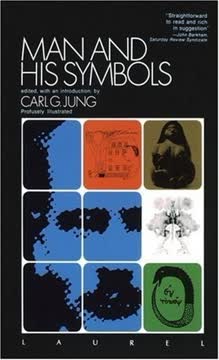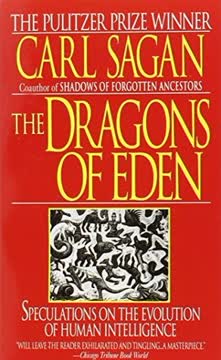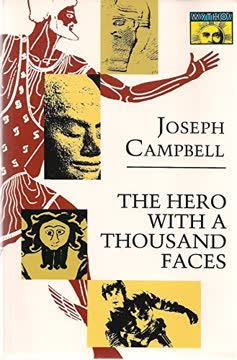Key Takeaways
1. The Call to Myth: An Early, Lifelong Fascination
By the time I was thirteen I knew about as much about the American Indian as a good many anthropologists that I have met since.
Early sparks. Joseph Campbell's lifelong passion for mythology began in childhood, ignited by experiences like Buffalo Bill's Wild West Show and visits to the Museum of Natural History, where he was captivated by Indian totem poles. This early fascination led him to devour books on American Indians, recognizing parallels with his own Catholic upbringing.
Catholic roots. His immersion in the rich, poetic world of Roman Catholicism, including serving Mass and studying doctrine, deeply influenced his understanding of myth and symbol. He observed that those deeply embedded in Catholic tradition often became poets or artists when they left the church, suggesting a profound connection between this religious background and a capacity for symbolic thinking.
Maverick path. This self-directed study of American Indian mythologies, pursued outside the formal school curriculum, laid the foundation for his maverick approach to scholarship. It demonstrated an early inclination to follow his own interests and delve deeply into subjects that resonated with him personally, rather than strictly adhering to prescribed academic paths.
2. European Studies: A World of Myth, Art, and Psychology Opens
The whole world opened up.
Intellectual explosion. Campbell's postgraduate years in Europe (1927-1929) were a period of intense intellectual discovery that fundamentally shaped his work. In Paris, he encountered modern art (Picasso, Brancusi) and groundbreaking literature (Joyce's Ulysses), which challenged his conventional academic training and revealed the power of art to translate knowledge into experience.
New dimensions. Moving to Munich, he delved into German scholarship, discovering the works of Freud, Jung, and Thomas Mann, and began studying Sanskrit. This confluence of psychology, literature, and Eastern philosophy provided him with new lenses through which to view mythology, moving beyond purely historical or philological approaches to explore the deep psychological and spiritual dimensions of myths.
Synthesizing knowledge. These years allowed him to see connections between seemingly disparate fields – Celtic myths, American Indian lore, Hindu philosophy, and modern literature and psychology. This period was crucial for developing his comparative approach, recognizing that the "one grandiose song" of mythology resonated across cultures and disciplines.
3. Follow Your Bliss: The Pathless Path to Fulfillment
Follow your bliss.
Inner guidance. Campbell's famous advice, "Follow your bliss," emerged from his own experience of navigating life's choices, particularly during the Depression when he was without a job. Instead of pursuing conventional paths, he dedicated himself to reading and studying what genuinely excited him, trusting that this inner pull would lead him where he needed to go.
Doors will open. He firmly believed that when you follow this deep sense of engagement and vitality, doors appear where you least expect them. This isn't about seeking mere fun or excitement, but about aligning with a profound inner push that connects you to your authentic existence, even when it involves pain or difficulty.
Integrity and the world's help. Living with integrity, guided by this inner compass, seems to invite support from the world. Campbell observed that those who pursued their genuine interests, even against social pressure or perceived risk, often led more vital and fulfilling lives than those who chose paths based on external expectations or perceived safety.
4. Myth as a Map of the Psyche: Understanding the Inner World
Mythologies are in fact the public dreams that move and shape societies, and conversely one’s own dreams are the little myths of the private gods, antigods, and guardian powers that are moving and shaping oneself: revelations of the actual fears, desires, aims, and values by which one’s life is subliminally ordered.
Public vs. private dreams. Campbell viewed myths as the collective dreams of a society, providing symbolic narratives that guide and shape its members. Conversely, individual dreams are personal myths, revealing the inner landscape of fears, desires, and values that influence one's life on a subconscious level.
Psychological parallels. His work with psychiatrist John Weir Perry, who studied the symbolism in the minds of schizophrenic patients, revealed striking parallels between the sequence of images in deep psychosis and the stages of the hero's journey. This demonstrated that mythological patterns are not just cultural stories but reflect fundamental structures and processes within the human psyche.
Signals system. Mythological images serve as a "signals system," metaphors that relate the facts of life to the psyche and point towards a transcendent reality. They offer clues and guidance for navigating the inner world, helping individuals understand their own psychological landscape and its connection to universal human experience.
5. Myth, Metaphor, and Transcendence: Seeing Beyond the Literal
Mythology opens the world so that it becomes transparent to something that is beyond speech, beyond words, in short, to what we call transcendence.
Beyond words. The primary function of mythology is to make the world and ourselves transparent to transcendence – a reality that lies beyond the grasp of language and conceptual thought. Mythic images are metaphors, pointing past themselves to this ultimate mystery, which is the ground of all being.
Metaphor vs. fact. A crucial distinction lies between reading myths as metaphors and treating them as literal facts. When symbols are concretized, as in fundamentalist interpretations of religious texts, they lose their transparency and become roadblocks to experiencing the transcendent. This turns mythology into "pathological mythology," focused on dogma rather than spiritual insight.
The ultimate mystery. This transcendent mystery is not an external entity but is also the ground of our own being. Realizing this, as taught in traditions like the Upaniṣads, is the goal of many spiritual paths. Myth helps bridge the gap between our everyday consciousness, focused on the phenomenal world, and this deeper, mysterious source within and around us.
6. Accord with Nature: Reconnecting with the Sacred Landscape
When you are in accord with nature, nature will yield up its bounty.
Harmony lost. Campbell highlighted the contrast between traditions that emphasize accord with nature, like American Indian mythologies or Taoism, and those in the West where nature is often viewed as fallen or corrupt. This ethical stance, focused on good versus evil, makes it difficult to yield to nature's processes and find sanctity in the immediate environment.
Finding the sacred here. Reconnecting with nature allows for a rediscovery of the sacred in the landscape itself. Places involved in local mythologies, like the stream at Esalen or the sacred grounds in Iceland, possess a palpable sanctity that speaks of the world's origins and helps align one's inner nature with the outer world.
Life lives on life. Understanding nature involves accepting its fundamental dynamic: life lives on life. Myths, particularly in hunting cultures, help reconcile the psyche to this reality, often portraying animals as willing participants in a cycle of sacrifice and gratitude, fostering a sense of accord rather than guilt.
7. The Artist's Function: Making the World Transparent to Mystery
The artist’s function is to render the forms of the world in which we live, and the social actions that we engage in, render them transparent to the transcendent: turn them into transparencies.
Art as revelation. Like myths, art serves to make the world transparent to transcendence. The artist takes the forms of everyday life and imbues them with a radiance that evokes an "Aha!" moment in the viewer, a recognition of the deeper mystery within the phenomenal world.
Beyond naturalism. Campbell felt that naturalism, which focuses solely on surface reality, is the "death of art" because it fails to engage with the metaphorical and transcendent dimensions. True art, whether painting, dance, or literature, uses form and technique to point beyond itself, connecting the audience to something universal and deeply human.
Muses' homeland. Mythology is the "homeland of the muses," the source from which artists can draw inspiration. By engaging with these ancient patterns, artists can find material that resonates with their own life experiences and translate it into contemporary forms, creating new myths that speak to the present age.
8. Universal Mythology: The One Story with a Thousand Faces
I realized—and nobody can tell me anything differently—that there’s one mythology in the world.
Elementary vs. folk ideas. Drawing on the work of Adolf Bastian, Campbell distinguished between "elementary ideas" – the universal motifs and forms that arise from the common psychological structure of humanity – and "folk ideas" – the specific, historically and geographically differentiated ways these ideas are expressed in different cultures.
Deep continuities. Despite vast cultural differences, the fundamental patterns of myth remain constant because they spring from the shared depths of the human soul. This universality is particularly striking in basic biological experiences and life stages, such as birth, initiation, marriage, and death, which are ritualized and mythologized across the globe.
A single symphony. Campbell saw the world's mythologies not as disparate tales but as variations on a single, shape-shifting story. His work aimed to reveal this underlying unity, suggesting that the spiritual history of humanity has unfolded like a "single symphony," with recurring themes expressed in diverse cultural forms.
9. Challenges of Modernity: Concretized Symbols and Lost Connections
The two prime ones that are troubling our world are the image of the Virgin Birth, which has nothing to do with a biological problem, and the image of the Promised Land, which has nothing to do with real estate.
Literalism's danger. A major problem in contemporary society, particularly within certain religious traditions, is the tendency to interpret mythological symbols literally as historical facts. This "concretization" strips the symbols of their deeper, metaphorical meaning, leading to misunderstandings and conflict.
Pathological mythology. When myths are used to assert the exclusive truth of one group or to justify actions like territorial claims or violence, they become "pathological." The idea of a "chosen people," for example, is seen as a distortion of the universal truth that "every people is a chosen people," each connected to the same mysterious, transcendent ground.
Disconnection from life. An archaic mythology, based on outdated cosmology or social structures, fails to service the psyches of people living in a different time and context. This leads to a sense of confusion and anxiety, as the inherited myths no longer resonate with lived experience, denying the very nature of contemporary life.
10. Marriage as a Transformative Ordeal
My notion of marriage is that if marriage isn’t a first priority in your life you’re not married.
A primary commitment. Campbell viewed marriage as an extremely important decision requiring total yielding to the relationship, becoming a "dyad" acting in relation to the "twoness." Sacrifices are made not to the other person, but to the relationship itself, which becomes the field for mutual development.
Beyond projection. While romantic love often begins with projecting an ideal image (the anima or animus) onto another person, the "ordeal" of marriage involves letting this projection dissolve and accepting the reality of the other person. This process, if navigated successfully, leads to a deeper, richer love based on compassion rather than mere passion or possession.
Individual development. Marriage is also an ordeal of individual development. It requires both partners to support each other's growth while maintaining the relationship as the central focus. When individual development ceases or is hindered, the relationship suffers, highlighting the need for continuous maturation within the marital bond.
11. The Wisdom of Age: Finding Fulfillment in the Present
The compensations are enormous.
Shifting focus. As one ages, the focus naturally shifts from future-oriented, life-decisive choices to dwelling in the richness of past experiences and the vitality of the present moment. This period can be one of fulfillment, where the "massiveness of our life conditions" is met with a different kind of energy, one of presence rather than striving.
Renunciation and integrity. The Indian idea of renunciation in old age – giving up systems of commitment to live spontaneously in the moment – is seen as a valuable approach. Reflecting on life with integrity becomes important, as past actions, particularly those lacking authenticity, can challenge one's sense of self in later years.
Plastic presence. Age offers the experience of "plastic presence," where the moment is not merely serving a future goal but is significant in itself. This contrasts with the goal-oriented nature of youth, where every decision feels functionally related to a future trajectory.
12. The Five Sheaths: Life's Deepest Drive is Bliss
All life is driven by bliss.
Layers of being. Drawing from the Vedanta tradition, Campbell described the Five Sheaths (Kośas) as layers enclosing the mystery of life. From the outermost Food Sheath (body) and Breath Sheath (vitality), one moves inward to the Mind Sheath (conscious thought, pain/pleasure), the Wisdom Sheath (spontaneous, unconscious life processes), and finally the innermost Sheath of Bliss (ānanda).
Myth bridges the gap. Mythic symbols act as the voice of the Wisdom Sheath, speaking to the often-distracted Mind Sheath to bring it back into accord with the natural order and the deeper dynamics of life. They help bridge the disparity between intellectual understanding and the spontaneous wisdom of the body and nature.
Finding true bliss. The ultimate goal is to connect with the Sheath of Bliss, realizing that life, at its deepest level, is an expression of bliss, even amidst pain and suffering. Following one's bliss means aligning with this deep push from within, trusting that this connection will open paths and bring fulfillment, regardless of external circumstances.
Last updated:
Review Summary
The Hero's Journey receives mostly positive reviews, with readers praising Campbell's insights into mythology and storytelling. Many find the book thought-provoking and enlightening, appreciating Campbell's vast knowledge and ability to connect diverse cultural narratives. Some readers note the book's format as a collection of interviews can feel disjointed. A few criticize Campbell's perceived sexism and outdated views. Overall, reviewers recommend the book for those interested in mythology, philosophy, and writing, though some suggest starting with Campbell's other works first.
Similar Books










Download PDF
Download EPUB
.epub digital book format is ideal for reading ebooks on phones, tablets, and e-readers.








